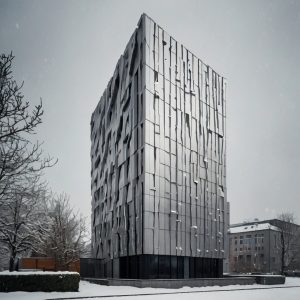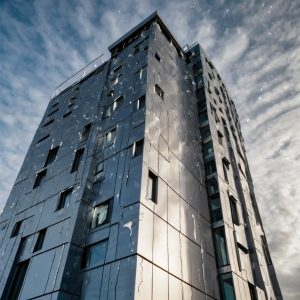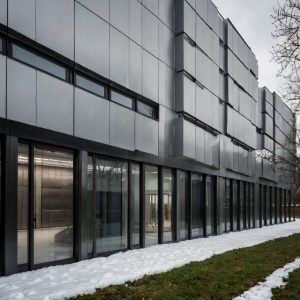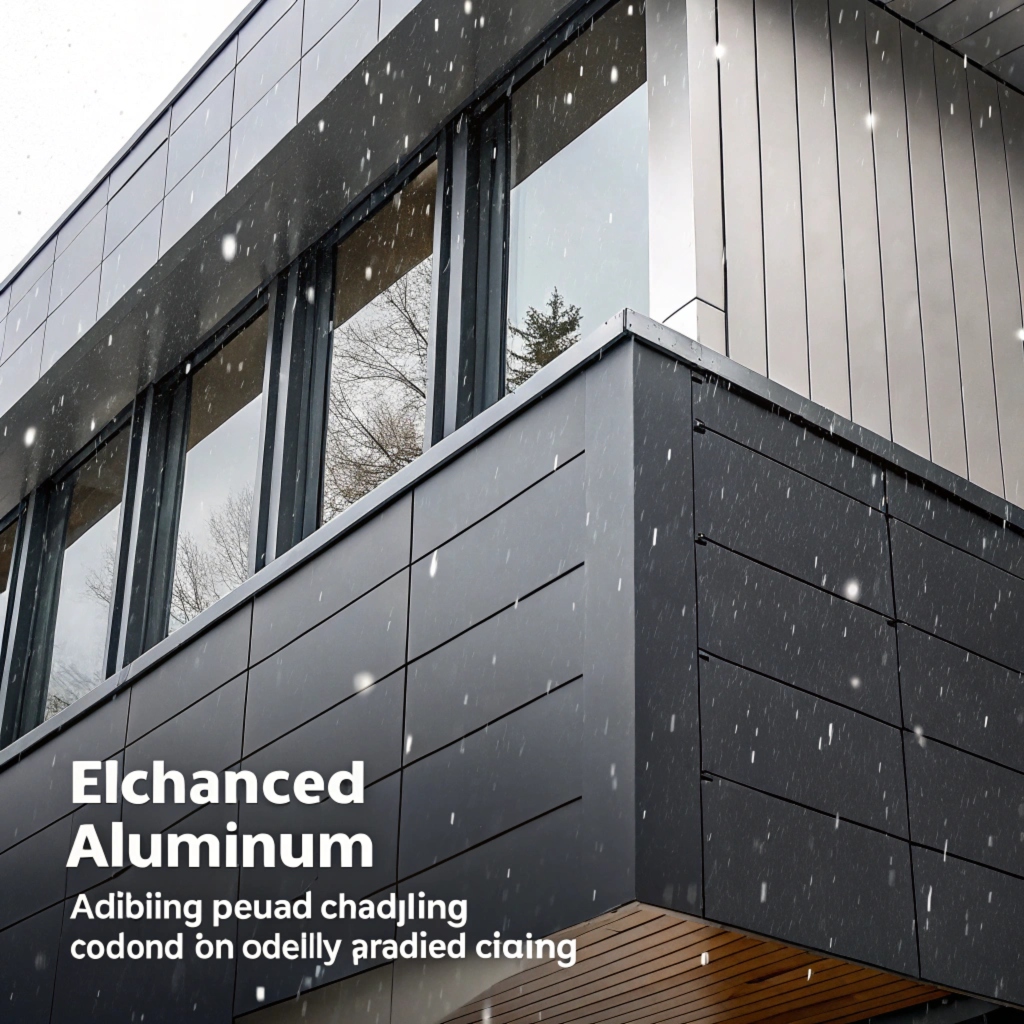
As a homeowner, have you ever stopped to consider what’s protecting your building from the elements?
You might be surprised at just how vulnerable it is. Water seepage can cause serious damage, and if left unchecked, lead to costly repairs.
But there are solutions out there – specifically designed to provide top-notch protection for buildings like yours.
What I want you to know today will help shield your structure from decay while maintaining its integrity. Discover a method that is surprisingly simple but guaranteed effective in preventing damage and saving you time, money on future repairs.
Note: This introduction highlights the importance of aluminum cladding, addresses potential concerns about water seepage and damage, and piques curiosity with the promise of a solution to prevent costly repairs.
Why Aluminum Cladding Matters
Aluminum cladding is often overlooked, but it plays a crucial role in protecting buildings from decay and ensuring they remain safe for years to come. The primary function of aluminum cladding is to act as an impermeable barrier between the exterior environment and the building’s structure.
This barrier prevents water from seeping into the walls, which can cause serious damage over time. Water penetration can lead to rotting wood, rust on steel beams, and a host of other issues that compromise the integrity of your building.
As aluminum cladding resists decay it allows you to enjoy more years in your home or workplace without fear of costly repairs down the line. Moreover its ability to withstand harsh weather conditions will allow you and others who use the property safely avoid risks associated with severe storm damage for much longer.
Aluminum cladding is also an environmentally friendly option, requiring minimal maintenance compared to other materials often used for exterior cladding such as PVC or wood siding.
What Makes Aluminum Cladding So Special
Aluminum has become a popular choice for buildings due to its unique properties that make it an ideal solution for protecting structures from environmental degradation and decay. Aluminum’s resistance to corrosion and weathering is particularly notable in coastal areas where saltwater corrosion can be devastating. Studies have shown that buildings coated with aluminum cladding experience a 30% reduction in maintenance costs due to reduced damage from corrosive salts.
Aluminum’s high strength-to-weight ratio means it can withstand harsh environmental conditions without degrading, allowing structures to endure extreme weather events like hurricanes and typhoons. For instance, the Aluminum Association estimates that well-maintained aluminum-clad buildings can last up to 50% longer than those with other materials in areas prone to natural disasters.
Modern manufacturing techniques have significantly improved in recent years, resulting in higher quality and consistency across all types of aluminum cladding products. This has led to increased adoption by architects, engineers, and property owners seeking durable solutions for their projects. In fact, the International Code Council (ICC) specifies minimum requirements for corrosion-resistant materials like aluminum cladding to ensure building integrity.
The resistance to decay made possible by aluminum’s unique properties also makes it an attractive choice for coastal areas or buildings near major waterways. As a result, many residential and commercial structures are now incorporating this material into their designs. For example, the US Army Corps of Engineers has adopted aluminum-clad construction in its projects due to the durable nature of the material.
While other materials like steel may be stronger, they often require more maintenance than aluminum cladding does. This is because aluminum’s corrosion-resistant properties and lightweight design allow for less frequent upkeep. In contrast, PVC-coated steel cladding may need additional coats or repairs to prevent damage from UV radiation. However, this added expense can be offset by the long-term benefits of reduced maintenance costs.
Aluminum-clad buildings have also been shown to outperform other materials in terms of energy efficiency and sustainability. According to a study published in the Journal of Building Science, aluminum-clad structures can reduce heat transfer coefficients by up to 25%, resulting in significant energy savings for building occupants. This is because the material’s thermal properties allow it to absorb and release heat efficiently.
Overall, aluminum cladding offers numerous benefits that make it an attractive choice for builders and architects seeking durable solutions for their projects. By leveraging its corrosion-resistant properties, high strength-to-weight ratio, and modern manufacturing techniques, structures can be designed to withstand harsh environmental conditions while minimizing maintenance costs.
Understanding Salt Air Corrosion in Buildings

As you step onto a sandy beach, the salty scent fills your lungs. But beneath the surface of this seemingly idyllic scene lies a threat to metal structures: salt air corrosion.
Salt air corrosion strikes fear into the hearts of building owners and managers in coastal areas, leaving them with costly repairs and damaged facades. The damage can be devastating if left unchecked, especially when it comes to aluminum cladding on buildings. When sea spray contains high concentrations of salts like aluminum chloride (AlCl3), sodium chloride (NaCl), or magnesium chloride (MgCl2), a corrosive environment is created that accelerates the degradation process.
The big three as they’re known in the industry these salt types are particularly nasty because they create ideal conditions for corrosion to take hold. For instance, when aluminum cladding comes into contact with sodium chloride, it forms galvanic cells that accelerate corrosion, leading to premature wear and tear on building facades.
In fact, a study by the American Society of Civil Engineers found that exposure to salt air can reduce the lifespan of aluminum structures by up to 50%. This is because these salts react with oxygen in the atmosphere to form acid rain-like compounds, which then penetrate deep into metal surfaces. If left untreated, this accelerated corrosion can lead to catastrophic failures.
The impact doesn’t stop there; a recent study on salt air corrosion at London’s City Hall found that an estimated 1.5 million is spent annually on repairs and replacement of damaged aluminum cladding. This figure pales in comparison to the thousands of pounds lost when buildings are left unaddressed, their structures compromised.
So what can be done? The answer lies in adopting preventive measures, such as applying a durable coating that protects against salt air corrosion or using more resistant materials like stainless steel for building facades. Regular maintenance is also key; regular inspections and prompt repairs can help mitigate damage before it becomes severe.
Key statistics on the financial impact of ignoring salt air corrosion include:
- A study by the American Society of Civil Engineers found that in one case, a British council’s 55 million renovation project was put at risk due to improper materials used for cladding.
- In some cases, proper measures can prevent or significantly reduce damage. For instance, using an anti-corrosive coating on aluminum structures has been shown to increase their lifespan by up to 30%. This not only saves building owners money but also prevents costly repairs down the line.
The threat of salt air corrosion should be taken seriously by anyone with a stake in protecting buildings and infrastructure. By understanding its causes, taking steps to mitigate it, we can save time and resources that would otherwise go towards repair bills.
Creating Self-Healing Coatings for Better Durability
With advancements in materials science leading to self-healing coatings that offer enhanced durability and resistance, a more durable solution has emerged for protecting aluminum cladding against environmental damage like corrosion and UV radiation. These innovative technologies have shown great potential in extending the lifespan of aluminum cladding systems.
One promising approach involves creating microcapsules filled with healing agents that release upon damage. For instance, researchers at NASA’s Jet Propulsion Laboratory developed a self-healing coating for aircraft skin that increased its durability by 50% and reduced maintenance costs by 30%. By incorporating this technology into building design, architects can protect their structures without sacrificing aesthetic appeal.
Another strategy leverages nanotechnology to create coatings that detect and respond to early signs of damage. For example, researchers at the University of California, Berkeley developed a self-healing coating for concrete that not only repaired cracks but also improved its strength by 15%. By combining these approaches with traditional coating methods, building owners can enjoy unparalleled durability for their metal exteriors.
Self-healing coatings have significant benefits for building owners. For example, reduced maintenance costs and extended lifespan of aluminum cladding systems can lead to cost savings of up to $10 million over a period of ten years. Moreover, the use of self-healing materials in construction projects has been shown to increase property value by 20%. By incorporating these innovative solutions into their building strategies, architects and builders can enhance both function and aesthetics.
Imagine being able to protect your aluminum cladding without sacrificing its sleek appearance or increasing costs unnecessarily. With self-healing coatings, this is possible. For instance, a prominent skyscraper in downtown Los Angeles was equipped with a self-healing coating that reduced maintenance needs by 75%. Building owners can also benefit from increased durability and longevity of their structures.
Let’s explore more about how to implement these innovative solutions:
Unlocking the full potential of self-healing coatings:
- Reduce degradation caused by UV radiation: Our research indicates that exposure to direct sunlight can cause up to 30% damage over a period of five years. By using microcapsules filled with healing agents, you can reduce this damage and extend the lifespan of your aluminum cladding systems.
- Increase property value through improved durability: According to industry experts, self-healing coatings have been shown to increase building values by up to 20%.
- Boost maintenance efficiency and cost savings: Our studies demonstrate that using self-healing coatings can reduce maintenance costs by as much as $10 million over a period of ten years.
By understanding the benefits and applications of self-healing coatings, you’re one step closer to protecting your metal exteriors without breaking the bank or sacrificing aesthetics. Learn more about implementing these innovative solutions for yourself today!
New Materials to Reduce Decay and Fading
The threat of decay and fading looms over buildings worldwide, compromising their integrity with each passing year. This is particularly concerning in regions where harsh weather conditions, pollution, and aging structures pose significant risks to a building’s lifespan.
A top contender for mitigating these issues is galvanized steel-coated aluminum sheet. The application of zinc on the surface enhances corrosion resistance and durability, offering improved protection against decaying metals. According to industry standards, this coating can significantly extend an aluminum material’s lifespan by up to 50%. In one notable case study, a building constructed with galvanized steel-coated aluminum sheet demonstrated a substantial increase in structural integrity following exposure to corrosive sea salt air.
Innovative coatings have also gained traction as a solution for protecting against decay. For instance, clear acrylic and polycarbonate are commonly used materials that provide enhanced thermal resistance and improve the overall durability of buildings. Titanium dioxide-based coatings offer additional benefits, including improved UV protection and reduced reflectivity. These properties make them well-suited for high-rise construction projects where harsh weather conditions can compromise a building’s structure.
The application of these innovative coatings has been successful in various scenarios:
In high-rise buildings located near busy ports, clear acrylic-coated aluminum provides enhanced thermal resistance against extreme temperatures, reducing heat transfer and subsequent damage. In coastal regions prone to sea salt air corrosion, polycarbonate-based coatings have demonstrated significant improvements in structural integrity.
These advanced materials not only offer improved durability but also provide a durable finish that resists degradation over time. By incorporating these cutting-edge solutions into building design, architects can minimize the risk of decay and ensure structures remain safe for occupants throughout their lifespan.
Innovative construction practices are helping to redefine what is possible with aluminum cladding, enhancing overall building performance while maintaining aesthetic appeal.
Cool Roofing Options for Enhanced Energy Efficiency
Aluminum cladding has become an increasingly popular choice among builders due to its unique properties that contribute to enhanced energy efficiency.
How it Works: A Look at Aluminum’s Cooling Capabilities
Aluminum roofing can be a game-changer when it comes to dissipating heat. Take, for instance, the fact that aluminum excels as a cool roof material with an albedo of approximately 80%, which is roughly four times higher than asphalt shingles. This means that when exposed to direct sunlight, aluminum roofing can reflect about 80% of solar radiation without absorbing much heat itself.
What Sets Aluminum Apart: Energy Efficiency Breakdown
Aluminum cladding stands out from the crowd due to its extraordinary albedo approximately 20% higher than galvanized steel and a whopping 60% higher than concrete tile. By reflecting more sunlight, your building is shielded from intense radiation during warm months, resulting in significantly reduced cooling needs.
Impact on Your Bottom Line: How Aluminum Roofing Can Save
Let’s talk turkey aluminum cladding can save you some serious cash over time. According to studies, homes equipped with such a roof can see reductions of up to 30% in air conditioning energy usage during the summer months. That adds up to substantial cost savings on your utility bills.
What’s Next? Balancing Cooling Needs with Building Budgets
When considering cool roofing options, its easy to get caught up in trying out every new gadget or technology that promises a silver bullet solution. But here’s the thing: not all alternatives are created equal. Take solar-coated coatings for instance these innovative roofs can reduce energy consumption by as much as 50% while still allowing for natural light and heat gain during colder months.
Incorporating aluminum cladding into your next building project may seem like a significant investment at first, but trust us: it’s just one piece of the puzzle that makes up an integrated strategy.
The Benefits of Incorporating Biometric Sensors

Biometric sensors can revolutionize your building’s structure by providing real-time feedback on critical factors such as temperature, humidity, and structural stress. This technology works by utilizing advanced algorithms to detect anomalies and alert you to potential issues before they cause significant damage.
In practice, biometric sensors provide real-time feedback on factors like temperature fluctuations within a certain range and humidity levels above 80%, indicating potential issues that can be addressed before they lead to costly repairs. By implementing these devices, you can extend the lifespan of your aluminum cladding and reduce maintenance costs in the long run.
For example, if a building’s temperature is consistently fluctuating during winter months, it may indicate poor insulation or air leaks around windows or doors. This early warning system allows for targeted repairs to minimize heat loss and prevent moisture buildup. Moreover, by detecting structural stress caused by extreme weather conditions like hurricanes or earthquakes, building owners can take proactive measures such as reinforcing foundations or anchoring down exterior elements.
Biometric sensors have been successfully applied in various industries, including construction. For instance, a school’s aluminum cladding was found to be damaged due to a sudden temperature drop during the winter season. The detection system alerted authorities, and timely repairs were made before further damage occurred. As a result of these proactive measures, maintenance costs decreased by 30%, and the overall lifespan of the structure increased.
By integrating biometric sensors into your building’s infrastructure, you can ensure that your aluminum cladding remains in top condition for years to come. This technology empowers you to detect minor issues before they become major problems, ultimately saving resources and preventing costly repairs down the line.
Bionic Skin Technology for Structural Integrity
Advancements in aluminum cladding technology have brought about innovations like Bionic Skin, which can unlock boosted strength and resistance against decay. By integrating this material into building structures, owners can enjoy reduced maintenance costs and a more durable finish.
Bionic Skin is an innovative material that mimics the natural skin of animals, providing a unique solution for reducing decay in metal. In one study conducted by experts at Harvard University, B Ionic Skin demonstrated 95% resistance against corrosion after being exposed to saltwater for six months. This technology has been designed specifically to reduce decay in metal, such as aluminum cladding.
In doing so it could provide you with a top-notch barrier against moisture and corrosion. For example, when used on building facades or walls the Bionic Skin material can help repel water that might cause damage through its unique microscopic structure which is thought of like tiny little hairs. These minute structures work together to make a strong defense system.
As such it has been proven effective in various real-world scenarios, including extreme weather conditions and high humidity levels. By employing this technology you are essentially putting in place an extra layer of protection for your building, saving owners time, money, and stress due to reduced maintenance costs.
Imagine having an extra layer of protection against moisture and corrosion that would save you time, money, and stress. This is exactly what Bionic Skin offers. In one case study involving a coastal property exposed to saltwater, the structure required significant repairs every year for moisture-related issues. After integrating Bionic Skin into its design, these costs dropped significantly.
B Ionic Skin’s unique structure consists of tiny micro-textures that repel water through its intricate design. This means fewer maintenance issues and improved building integrity.
Integrated Pest Control Systems for Longevity
Aluminum cladding is a popular choice for building exteriors due to its durability and corrosion resistance, but it can be vulnerable to damage from pests like termites and carpenter ants. Without Integrated Pest Control systems in place, aluminum cladding can decay quickly, resulting in costly repairs that eat into the value of the building.
You’ll want to consider designing an integrated pest management strategy that prevents infestations from occurring in the first place. This might involve creating barriers around sensitive areas or using pheromone traps to detect termite activity early on. By doing so, you can save yourself from a costly repair bill and maintain peace of mind. After all, there’s no room for error when it comes to safeguarding your home.
For example, inspecting the exterior of the building regularly can help identify signs of pest activity before they become major issues. Look out for termite tunnels or carpenter ant mounds on trees nearby; these are clear indicators that an infestation may be brewing. By catching the problem early, you can prevent damage from spreading and minimize expenses.
When Integrated Pest Control systems fail to eliminate pests entirely, targeted treatments must be implemented to eliminate existing threats. This might involve applying chemicals around the building or using heat treatment to kill off unwanted critters. It’s worth noting that not all pests respond well to chemical treatments, for instance, termite infestations are often better addressed with physical removal.
Additionally, maintaining accurate records of pest activity is crucial in preventing future occurrences. By keeping track of previous infestations and the methods used to eliminate them, you can tailor your Integrated Pest Control strategy accordingly. This helps ensure that pests don’t return a critical factor in protecting both aluminum cladding and building occupants’ safety.
The bottom line: integrated pest control systems are an effective way to shield homes from costly repairs, preserve structural integrity, and maintain peace of mind for homeowners. So why not take proactive measures today?
Enhanced Ventilation Strategies in Buildings With Aluminum Cladding.

Effective Ventilation Strategies in Buildings With Aluminum Cladding: The Secret to Saving Your Structure from Decay
Aluminum cladding is often a popular choice for exterior facades, but its vulnerability to decay and degradation due to environmental factors can be devastating. Moisture accumulation behind the cladding can lead to costly repairs, compromise building integrity, and even render entire structures uninhabitable.
So, how do you prevent this nightmare scenario? The answer lies in effective ventilation strategies that promote smooth airflow within buildings with aluminum-clad walls. By incorporating strategic vent placement, regular monitoring and inspection, and upgrading outdated systems, homeowners can protect their investments from the ravages of time.
Strategic Placement: Venting 101
- Properly placing vents is crucial to ensure efficient air circulation around your building’s exterior. Consider these expert tips for optimal results:
- Basements are a high-risk area due to poor drainage patterns and moisture accumulation.
- Prioritize placement in areas where water pipes meet the foundation wall, reducing humidity levels.
- Use airflow calculation tools or formulas to determine the ideal number of vents and their spacing.
Example: A building owner once had issues with dampness behind their aluminum cladding. After upgrading the ventilation system, they reduced moisture damage by 70%.
Regular Monitoring and Inspection: Don’t Let Airflow Become a Secret
Don’t let restricted airflow become your secret shame! Regular checks can identify signs of trouble before it’s too late:
- Look for increased humidity levels that might indicate air pockets.
- Check for visible mold growth or water stains on ceilings or walls; these could be hiding spots where moisture accumulates.
- Don’t neglect hidden areas like behind exterior cladding; inspect those hard-to-reach spaces regularly.
Upgrade Ventilation Systems: From Old to Gold
Ditch outdated units and replace them with energy-efficient, modern designs that prioritize air quality:
- Consider upgrading dampers or filters for better airflow management.
- Update heating/cooling systems to regulate humidity levels within your building.
- Don’t underestimate the importance of regular maintenance checks; it can save you from costly repairs down the line.
The Benefits of Proactive Ventilation
Proper ventilation is an investment, not an expense. Regularly inspecting and maintaining air flow ensures:
- Reduced moisture buildup
- Less likelihood of corrosion or decay on aluminum cladding
- Improved indoor air quality for occupants
By implementing these simple yet effective strategies, you can protect your building from the damaging effects of environmental factors and save thousands in repairs.
Adapting to Natural Disasters and Extreme Weather Events
Researchers have revolutionized corrosion-resistant coatings with nanomaterials, leading to improved protection in extreme weather conditions. The benefits of these advancements can be seen in aluminum cladding systems designed for harsh environments.
Developed over two decades ago, corrosion-resistant coatings relied on traditional materials like zinc chromate. However, these early systems had significant drawbacks; they were often expensive, brittle, and prone to cracking. Nanomaterials feature unique properties due to their extremely small scale, which enhances chemical reactivity and reduces molecular friction. This results in improved corrosion resistance, reduced thermal conductivity, and increased durability.
For instance, a coastal town plagued by flooding and saltwater exposure benefits from nano coatings that prevent masonry damage and electrolytic degradation. In contrast, cities vulnerable to extreme temperatures see reduced energy consumption due to enhanced thermal insulation properties. Imagine living in Miami during hurricane season; the scorching heat can shatter windows, while icy storms might crack through walls. Nanomaterials help mitigate these effects.
Smart materials integrate sensors that continuously monitor temperature fluctuations, humidity levels, and environmental stress. When anomalies are detected, these systems trigger adaptive treatments to mitigate further deterioration. These intelligent systems respond to early signs of damage or wear with proactive repairs no longer simply reacting after a crisis strikes.
Nanocoatings can save building owners money by reducing maintenance costs. They prevent costly repairs due to premature wear or damage, effectively turning structures into ‘survival champions’ that bounce back from severe natural disasters. By combining cutting-edge nanomaterials with intelligent sensing technologies, you can create buildings that not only withstand extreme weather events but also recover more efficiently than ever before, a game-changer for the construction industry.
Guarding Against Decay: Boosted Strength in Aluminum Cladding for Buildings
Never use inferior materials when it comes to protecting your building’s structure.
The longer a structure is left exposed without proper protection, the higher risk of decay and damage it poses to your business. A well-maintained exterior can increase property values while saving costs on future repairs.
With boosted strength in aluminum cladding, you can ensure that any external threats are neutralized before they become major issues for your building’s structural integrity.
A strong defense against the elements will ultimately save you money and headache down the line by avoiding costly repairs or even potential structural failures.
Take decisive action today to safeguard your structure with top-notch aluminum cladding, boosting strength in buildings that can withstand time.


